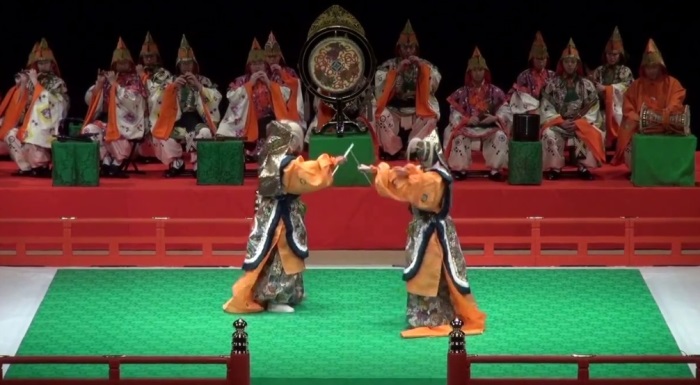Bugaku (舞楽, court dance, and music) is a traditional Japanese dance done mostly in the Japanese imperial court for over 1,200 years.
Because it’s only ever performed to select elites, Bugaku has only ever been known to the Japanese nobility.
After World War II, the dance was opened to the public and even toured worldwide, starting in 1959.
Characteristics of the Bugaku dance
The dance is marked by its slow, precise, and regal movements, performed on a square platform measuring around 6 yards by 6 yards.
Dancers wear intricate traditional Buddhist costumes, often accompanied by beautiful masks. The music and dance patterns are repeated several times during the performance.
Bugaku dances are basically plays that depict legendary battles, encounters with divine personages, or mythical beasts like the phoenix.
One famous set-piece even portrays two dragons frolicking, showcasing the artistry and creativity of the dance.
The movements and postures in Bugaku are precisely described in an ancient instruction manual, often using natural metaphors such as swaying like a tree in a cool breeze.
Check more: What Is Regency Dance?
Bugaku Dance Inspirations
Bugaku dance draws heavily from imported Buddhist culture but incorporates many traditional Shinto aspects.
For example, the story of Amaterasu, the Japanese sun goddess, and Ame-no-uzume, the goddess of music and dance are pillars of the Bugaku.
The dance is said to have begun when Ame-no-uzume’s lively dance brought Amaterasu out of hiding, restoring sunlight to the world.
Bugaku Music
Bugaku is often accompanied by Gagaku, the court music that complements the dance.
The traditions of Gagaku and Bugaku are the world’s oldest surviving court dance and music!
